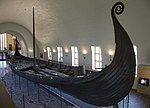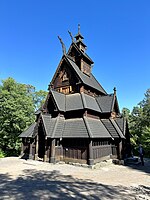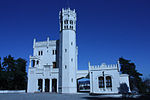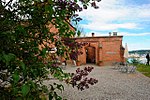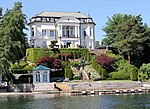Norwegian Museum of Cultural History
1894 establishments in NorwayBygdøyFolk museums in NorwayMuseums established in 1894Museums in Oslo ... and 2 more
Open-air museums in NorwayPhotography archives in Norway

Norsk Folkemuseum (Norwegian Museum of Cultural History), at Bygdøy, Oslo, Norway, is a museum of cultural history with extensive collections of artifacts from all social groups and all regions of the country. It also incorporates a large open-air museum with more than 150 buildings, relocated from towns and rural districts.The Norwegian Museum of Cultural History is situated on the Bygdøy peninsula near several other museums, including the Viking Ship Museum; the Fram Museum; the Kon-Tiki Museum; and the Norwegian Maritime Museum.
Excerpt from the Wikipedia article Norwegian Museum of Cultural History (License: CC BY-SA 3.0, Authors, Images).Norwegian Museum of Cultural History
Museumsveien, Oslo Bygdøy
Geographical coordinates (GPS) Address Nearby Places Show on map
Geographical coordinates (GPS)
| Latitude | Longitude |
|---|---|
| N 59.906911111111 ° | E 10.685958333333 ° |
Address
Museumsveien
0286 Oslo, Bygdøy
Norway
Open on Google Maps

